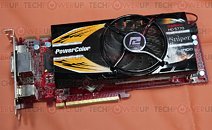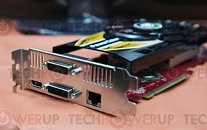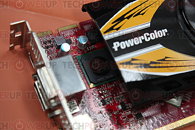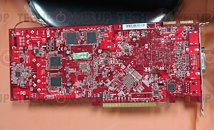Tuesday, June 1st 2010

PowerColor Sniper HD 5770 + Killer NIC Up Close
Call it the admin's graphics card or the gamer's network card, but PowerColor seems to have come up with an unusual combination of a graphics processor (ATI Radeon HD 5770) with a hardware-accelerated network processor (Bigfoot Killer), which are seated on the same board, and share the system bus using a PCI-Express bridge chip. The GPU is a fairly standard HD 5770 that packs DirectX 11 support, 800 stream processors, and 1 GB of GDDR5 memory across a 128-bit wide interface, while the NPU is an ARM-derived system-on-chip (SoC) which offloads network stack processing completely from the host in a bid to cut system latencies. The inclusion of a PCI-Express bridge chip and the NPU significantly increased the size of PCB, yet the card seems to make do with just a single 6-pin power input. Given that a standalone PCI-E Killer NIC easily costs over $120 and the HD 5770 around the $150 mark, with the $10-odd PCI-E bridge chip, one can expect this product to easily cost over $250.




28 Comments on PowerColor Sniper HD 5770 + Killer NIC Up Close
Days of too low CPU power is nearly gone. You can overclock your CPU at decent ranges and some of them towards 4GHz. No need for a killer nick to reduce CPU load.
Bigfoot Networks does not allow one to run arbitrary code on the KillerNIC series even though it does run Linux, so the following does not apply so much.
Just be thankful Bigfoot did choose the following SoC:
www.freescale.com/webapp/sps/site/prod_summary.jsp?code=P1021
The e500 core on the P1021, while still POWER compliant, uses has a shared register file for integer and floating point instructions with 32 registers that are 64-bits wide. Which isn't at all normal.
Then again there is the P4080, with eight e500mc cores on a single die. The e500mc has a proper FPU, but is only a 32 bit processor, with support up to 16GB of memory total, and does so by using the same tricks as PAE on x86 processors.
www.freescale.com/webapp/sps/site/prod_summary.jsp?code=P4080
Mind you, there is no SIMD/Altivec unit in the P4080 and each core only has 128KB of L2 cache and 2MB total L3 cache. The P4080 is intended for 3G, 4G, and WiMax wireless base stations and not your home PC. Freescale also announced the chip in 2008, expecting it to sample soon and then enter production soon afterward, at least at the time. The P4080 is only sampling now, and production may take a while yet. But it is still eight CPU cores on one die.